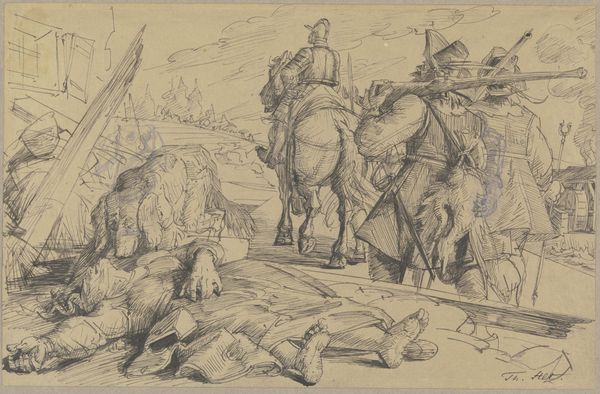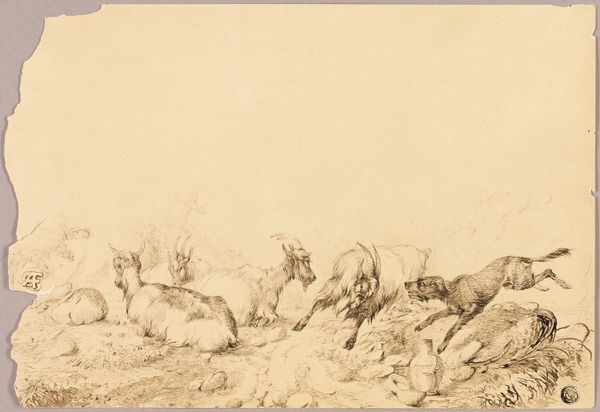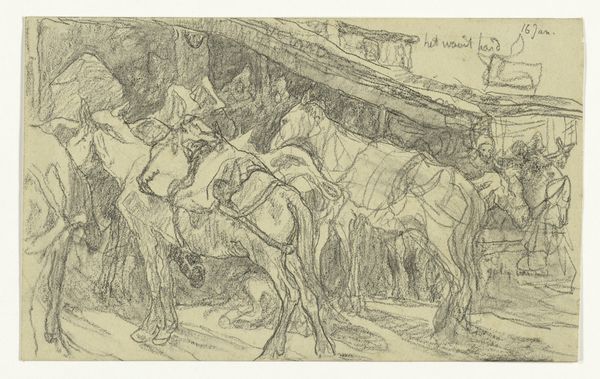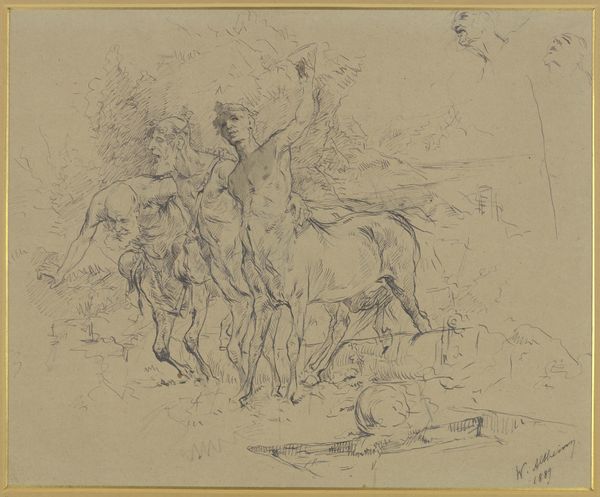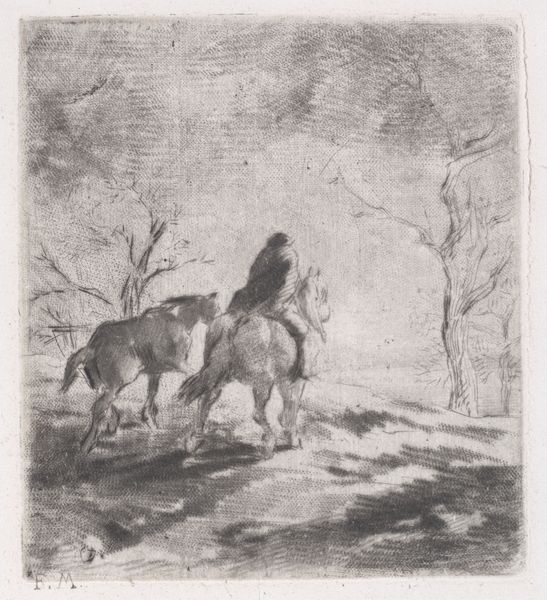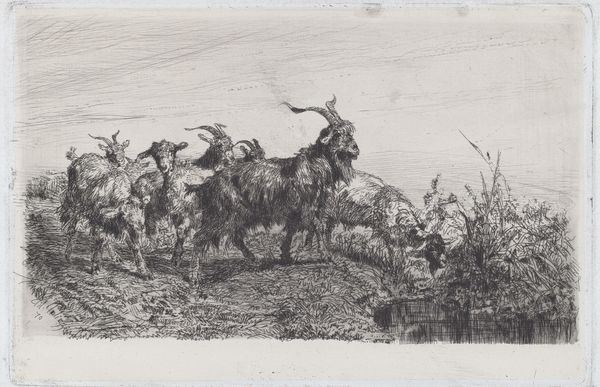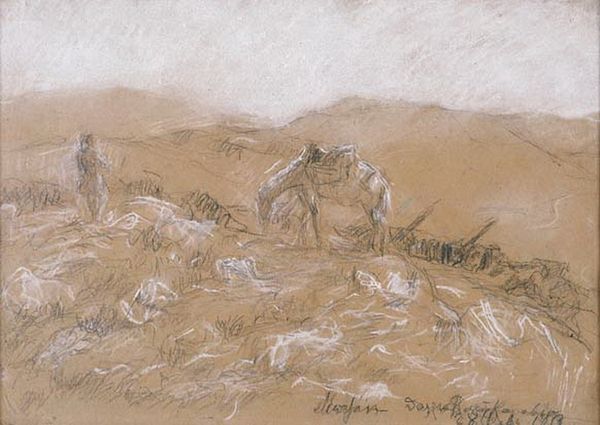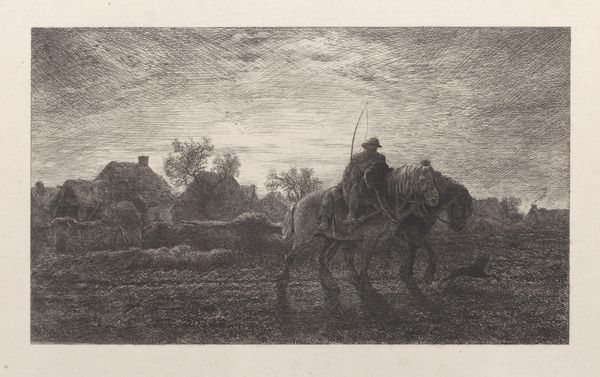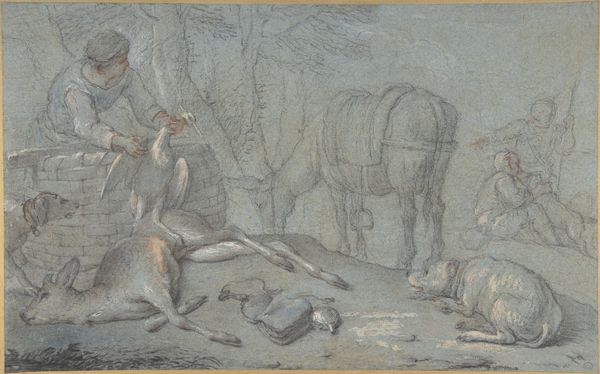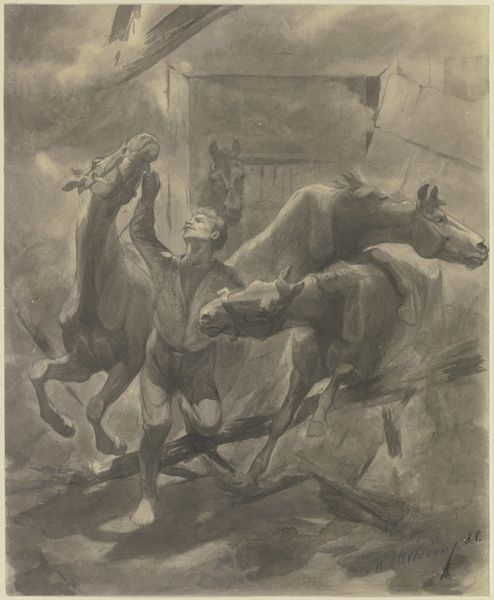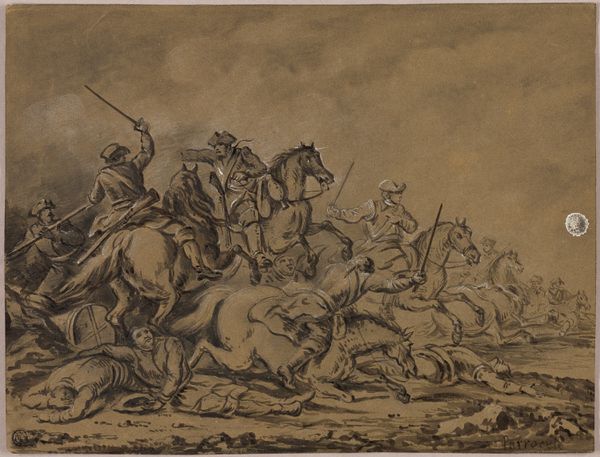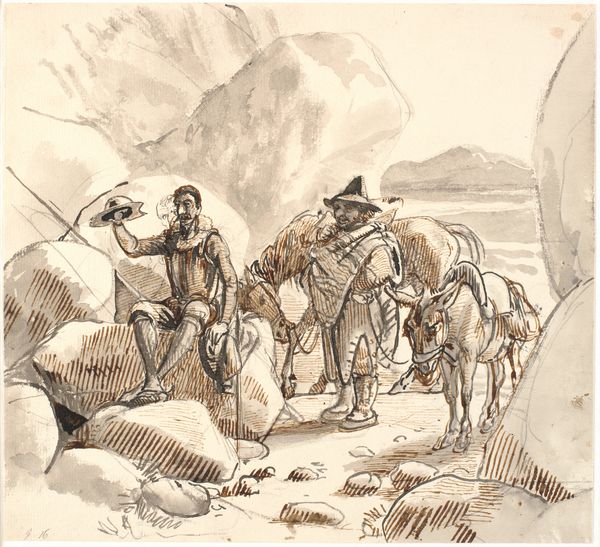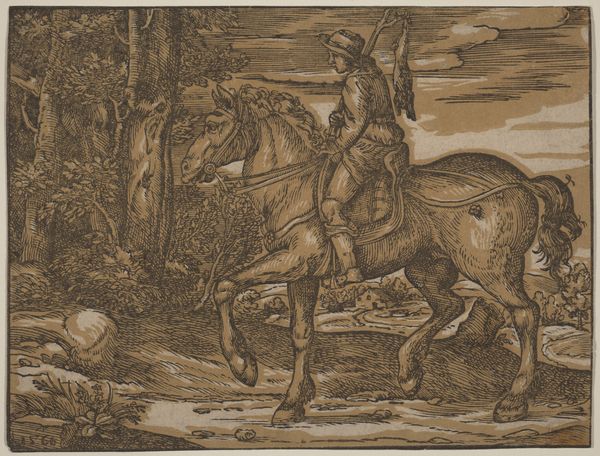
Copyright: Public Domain
Editor: This is "Sigfrid's Death," a drawing by Fritz Boehle, created in 1889 using charcoal and ink on paper. It feels so tragic and raw. What do you see in this piece? Curator: Well, from a historical perspective, it's fascinating how Boehle engages with Germanic mythology and the Nibelungenlied, which was having a resurgence in popularity at this time. You see it in Wagner's operas too. This drawing becomes part of that cultural landscape, a visual interpretation of a very potent national myth. How do you see the landscape functioning here? Editor: It seems desolate, mirroring the grief in the scene. The muted tones amplify the somber mood. It almost feels staged. Curator: Exactly! And that’s interesting isn’t it? It's a stage upon which national identity is being constructed, in part, for a German public eager for this sort of Romantic Nationalism. Boehle is not just illustrating a story, but participating in shaping collective memory through these powerful, emotive images. Who do you imagine saw this when it was first displayed? Editor: Probably upper-middle class citizens interested in art, Wagner's operas and old legends. I had never considered how art contributes to national identity. Curator: And it's crucial to consider the socio-political climate too – the rise of German nationalism, the search for cultural heroes… Boehle’s drawing isn’t just art, it's a statement. It reflects the values and anxieties of its time. It makes you wonder, doesn't it, about the role of art in constructing these national narratives and collective identities. Editor: It does! Seeing it through that historical lens makes me realize this piece is far more complex than I initially thought.
Comments
No comments
Be the first to comment and join the conversation on the ultimate creative platform.
